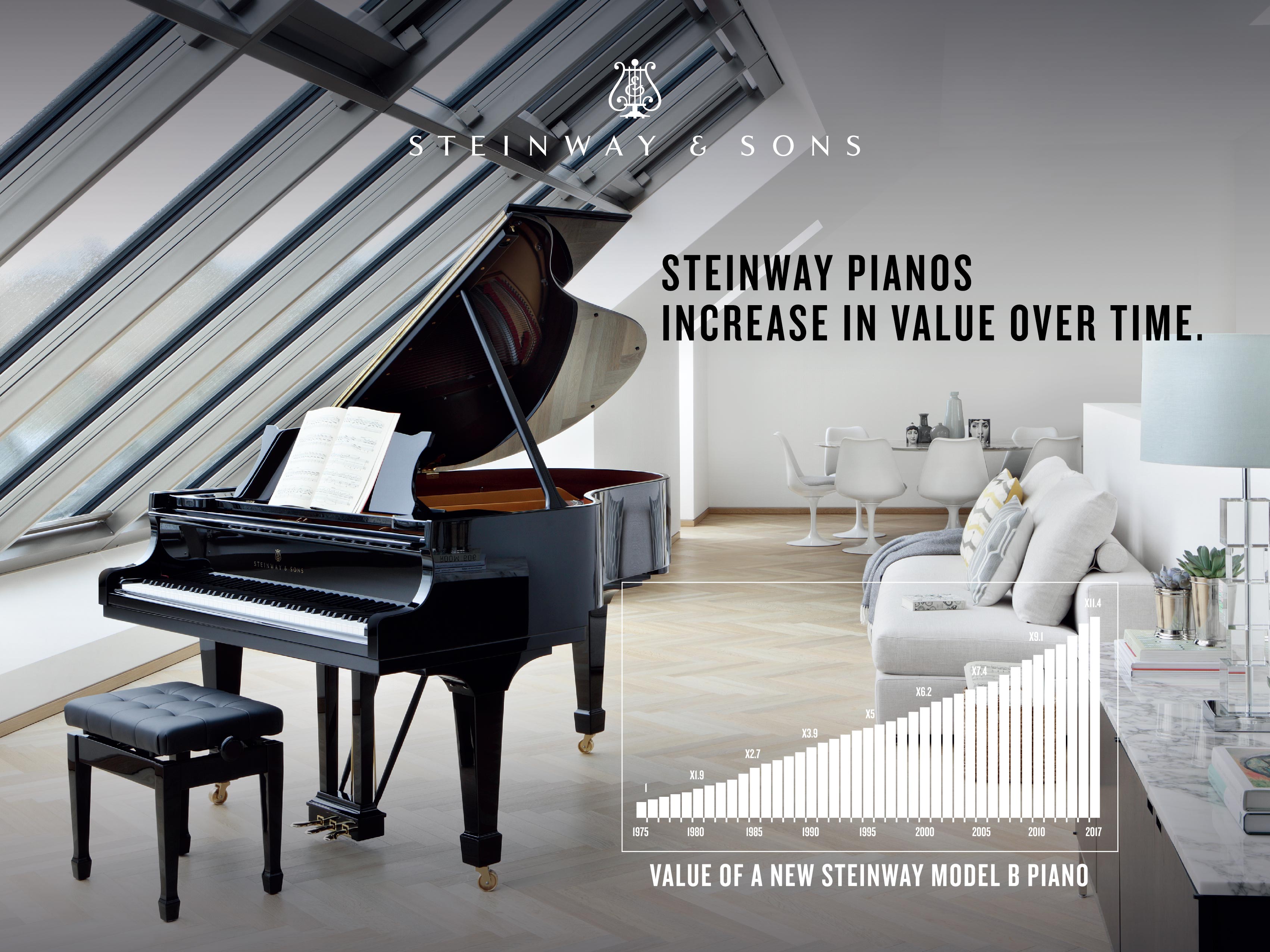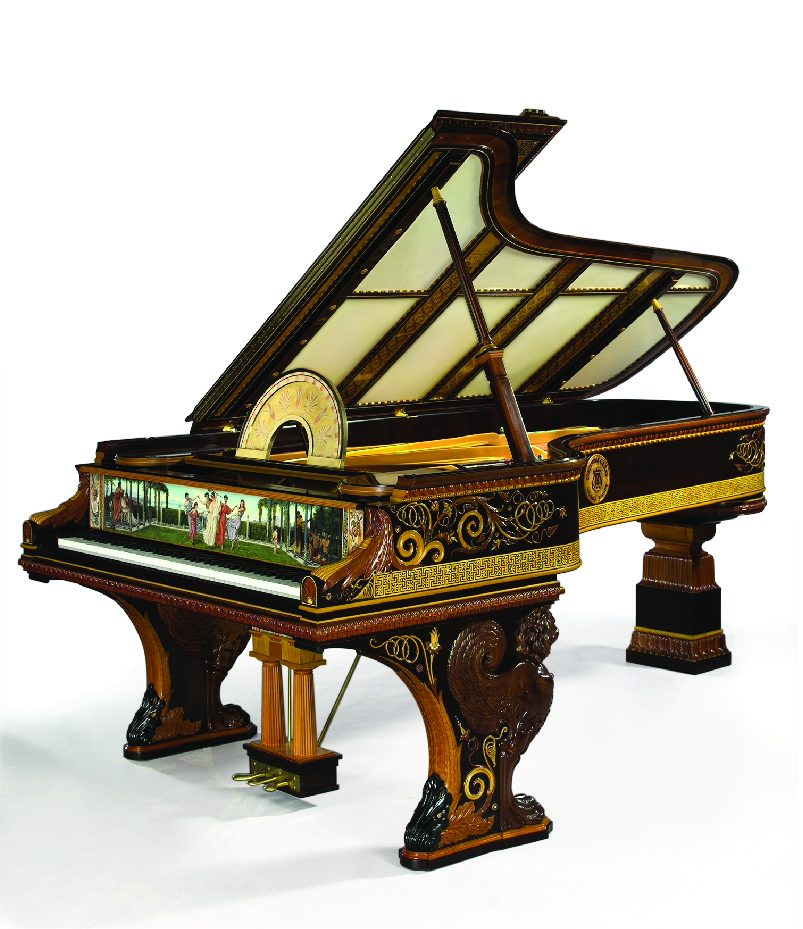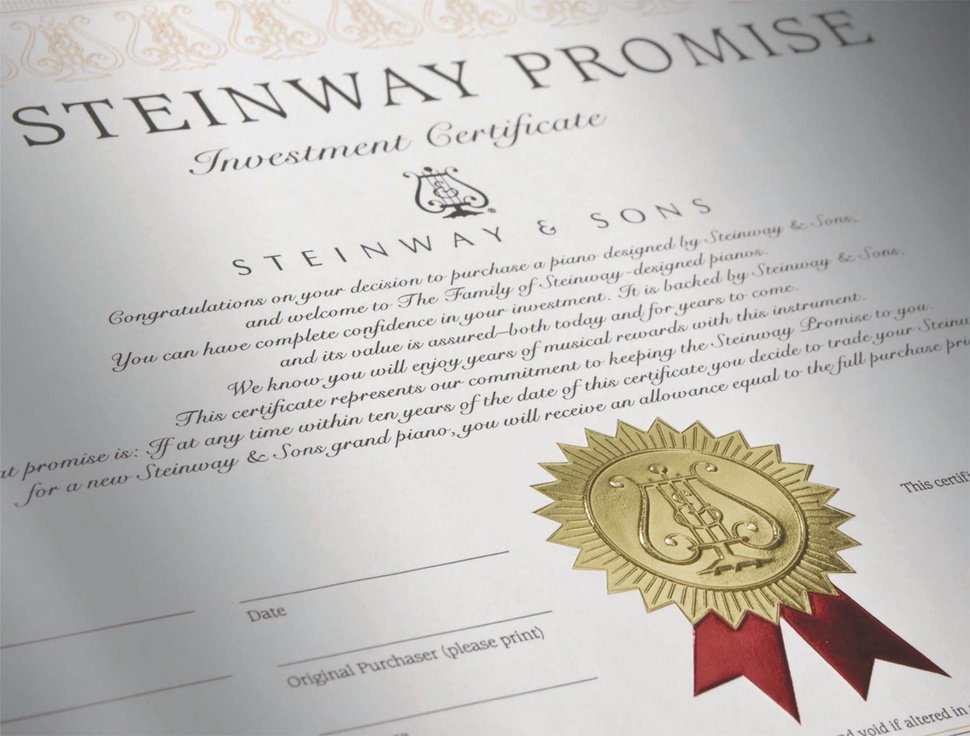Investment Value

The resale or investment value isn’t usually the first thing people consider when purchasing a new piano; yet when the instrument eventually is no longer able to meet the requirements of the pianist or approaches its natural lifespan, most owners find themselves in a predicament where the resale value is at best 50% of its original purchase value.
Despite this, there are still a handful of piano manufacturers who manage to maintain reasonably attractive resale prices due to their high-quality materials and the instrument’s longevity. Steinway Pianos for example, traditionally increase in prices by 4-6% annually, establishing a history of legendary financial appreciation over the course of more than a century and a half. This allows Steinway-owners to possibly sell their good-condition Steinway pianos at a price higher than they originally paid for it.
 On the investment front, the most expensive piano sold at an auction was an 1887 Steinway Model D-274 Alma Tadema (pictured on the left), which went for $1.2 million in 1997 at Christie’s in London; while the 600,000th Steinway Fibonacci Grand Piano was priced at $2.4 million.
On the investment front, the most expensive piano sold at an auction was an 1887 Steinway Model D-274 Alma Tadema (pictured on the left), which went for $1.2 million in 1997 at Christie’s in London; while the 600,000th Steinway Fibonacci Grand Piano was priced at $2.4 million.
 Investment values are not limited only to the higher priced instruments. The Boston or Essex Pianos designed by Steinway & Sons comes with a 10-year STEINWAY PROMISE, allowing owners to trade-in their instruments for 100% of the original purchase price towards a Steinway Grand Piano.
Investment values are not limited only to the higher priced instruments. The Boston or Essex Pianos designed by Steinway & Sons comes with a 10-year STEINWAY PROMISE, allowing owners to trade-in their instruments for 100% of the original purchase price towards a Steinway Grand Piano.
Henry Engelhard Steinway’s principle was “to build the best piano possible; sell it at the lowest price consistent with quality”, allowing generations of Steinway owners a rare opportunity to invest in beauty, craftsmanship, endurance, performance and joy.